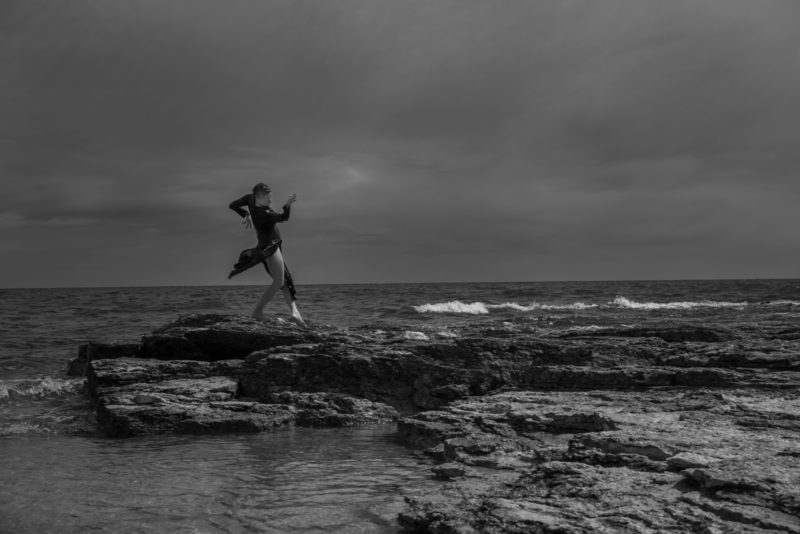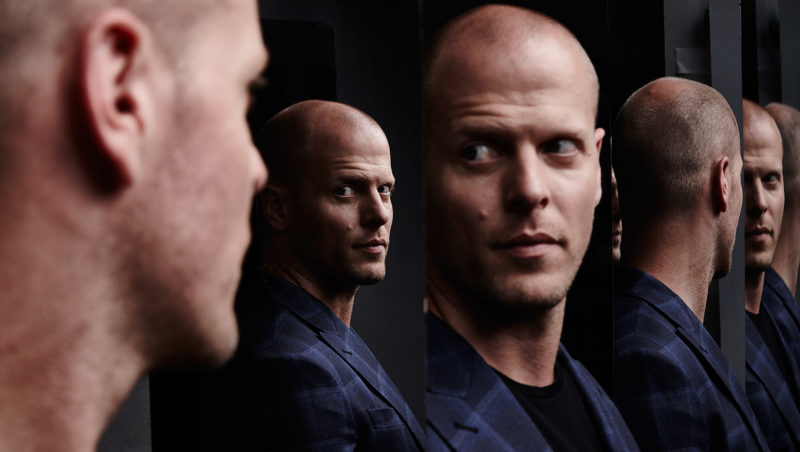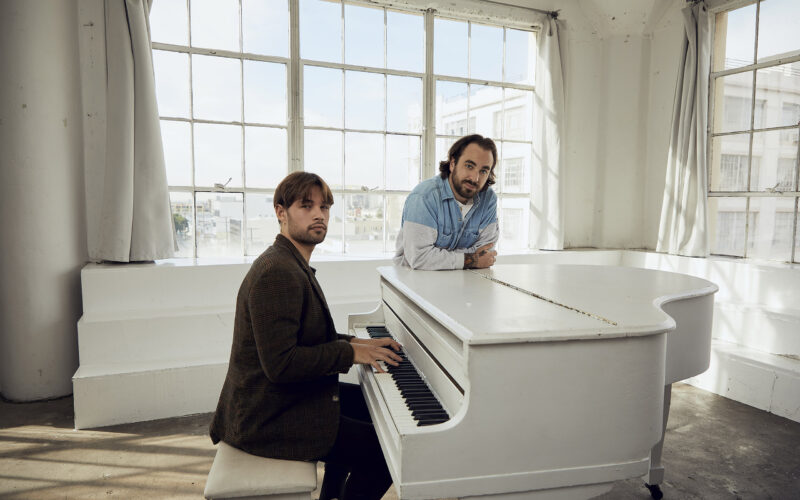CARA SEYMOUR has been in some of the seminal films of the last fifteen years and during that time has worked with a who’s who of directors. From Spike Jonze, to Martin Scorsese, Lars von Trier and now with STEVEN SODERBERGH on his new series THE KNICK, she brings the height of commitment to all her roles and in doing so imbues her characters with a palpable humanity. In the spirit of disclosure I should say I know all this as her husband for the last 20 years. I’ve seen it all unfold. This issue having the theme of PASSION, the editors kindly asked me to ask my wife some questions about her latest role amongst other things. Interview by JOSH CHEUSE.
Josh Cheuse: So here we are. I’m behind the camera, you’re in front. Let’s have a go.
Can you describe how you came from a small town outside London and traveled to New York and ended up in a production of Ecstasy, by Mike Leigh, that was one of the most talked about NY theater events of the 90s. I think that was your breakout role in NY and it ran for nine months in various places on theater row. Didn’t the Pope drive by one night? Was this an omen? Could he have known about Sister Harriet? I think this Pope might dig her.
Cara Seymour: Yes, the Pope was going down 42nd Street that night, the play was called Ecstasy, but it was a lot about agony. That was intense, one of those transcendent New York nights.
I was with my Gran a lot as kid, she was a lapsed Catholic who told me a lot of stories about growing up in the East End of London in the early twentieth century, which had a truly profound affect on me. She diverted her faith into supporting the Labour party, but I think she always remained a Catholic at heart. Any organization that espouses compassion in this world gets my vote, especially Pope Francis, but faith is very personal. As for Sister Harriet, she’s part of this huge canvas of characters that Michael Begler, Jack Amiel and Steven Katz have created, it’s hard to pull her out and see her in isolation. To me the stories are so knitted together, they leave you with more questions than opinions… but there’s no getting away from the suffering.
I read today that 1500 babies a week were dying in Manhattan in 1907, must have been around the same in 1900. Conditions were very grim for a lot of people. As a midwife and running the orphanage, Sister Harriet’s in the thick of it. It helps you understand why someone might be driven to compromise their faith.
JC: New York was such a different place when we moved back here. In the 1990s, I mean. Before cell phones and social media. We saw a lot of music. Iggy Pop, Ramones, I feel like all your characters have a bit of punk spirit, not least Sister Harriet. How were you influenced by music?
CS: Well, you brought me to all the Rock ’n Roll stuff, I was all about political theater in an all women theater company! I remember we saw Iggy a bunch of times, he is so inspiring. His gigs are kind of spiritual, his thing with the audience. I constantly listen to music when I work, but everything, soul, rap, classical, opera… I love “When I Am Laid in Earth” by Purcell, that Timothy Spall sings to perfection in Mr. Turner!
I have seen amazing performances. Keith Richards dropping to his knees shaking his fist at the rain at Giants Stadium and singing “Happy,” Tony Bennett singing “Fly Me to the Moon” without a mic at Carnegie Hall, Mary J. Blige singing “One” at the Garden with Bono and U2… Oasis at the Stone Pony, Black Crowes, Dylan, Bowie. I could go on here, on and on. What was that thing Robert Mitchum said about farting through silk? “If you stick with me babe, you’ll be farting through silk.” Well, you took me to great shows. Thanks!
JC: Wow. I’ll be Mitchum and you can be Deborah Kerr as Sister Angela in Heaven, Knows Mr. Allison, directed by John Huston. Another one of our faves and still fitting our theme. Onwards.
I love process, can you explain how working in TV now is different from, say, theater or film? Shooting with the RED Dragon cameras on video,their ability in low light, working fast with the great ensemble cast and actors like Chris Sullivan as your foil.
CS: It’s great to really admire your acting partners. I loved working with Juliet Rylance and having two women like that really talking the way Cornelia and Harriet do, that’s something. And Chris Sullivan, amazing, he’s a music guy too, he’s got a great voice. I love the way great singers act, like Frank Sinatra. I guess, it’s like being in a great big band on a set, everyone’s got their bit to play. I love that. You need passion and spontaneity when you have only a few takes. It helps when you really admire everyone around you. Soderbergh is a cool cat and the people around him are cool and funny and masters of their game, like him.
JC: I think it’s a symptom of the time she lived in that Sister Harriet’s activities might not be typical of most nuns, smoking, her side business (no spoilers for the uninitiated), yet I still feel like the character is devoted to her calling.
CS: I don’t think it would be such an interesting journey if she wasn’t devoted to her calling. The stakes are very high for her, in my mind. But I don’t know which way the story goes next season.
JC: The Knick been described as a ten-hour film and recently showed that way in Rome, your old stomping grounds from Gangs of New York. I know Soderbergh is a film scholar, are there any films that have inspired you over the years, actors and/or directors. I know you love Giulietta Masina and Peter Sellers? The Italian neo-realist school, Pasolini. I feel like Sister Harriet has a bit of all those actors in her. Maybe a bit of Magnani? A bit of Roberto Rossellini’s Flowers of St. Francis?
CS: I loved these two Polish nun movies I saw this year, Ida by Pawel Pawlikowski and another much older, but kinda trippy Mother Joan of the Angels by Jerzy Kawalerowicz.
I it was about seven-and-a-half months in Rome, and I had a lot of downtime, because I had a very small role. It is wonderful enough to be in a Scorsese movie, to be submerged in that period, but to be at Cinecittà, to be in Rome was out of this world. To be where Fellini made his movies was just incredible. Giulietta Masina in Nights of Cabiria, one of my favorite Fellini’s. But the instant I saw her in La Strada I was really moved. She was like a female Charlie Chaplin, it was one of the first films I saw when I came to live in New York. And Anna Magnani in Pasolini’s Mamna Roma, brilliant, blows my mind. And Peter Sellers in anything really but especially Being There, well, everyone in that movie, Shirley MacLaine. Great performances I could watch and watch again, like playing great records.
Very nice of you to see those performances in my work, but then you’re my husband you know what I like! I’m a fan. I feel my toes curl with embarrassment, thinking that anything I do comes close to the work that I love and am inspired by, if you know what I mean. You can love and admire the work of others, but ultimately you’re on your own. What if I started throwing names like Robert Frank or Robert Capa in your direction…
JC: Ack, point taken. But all those that came before us were inspired by their faves.
CS: Flowers of St. Francis has my favorite ending to any movie, it’s totally daft and totally profound.
JC: The daft and the profound. That sums it up. Life, I mean. Are you looking forward to the next season?
CS: Can not wait. It is an amazing show, I am very thankful to be part of it. Very.
JC: I think we are all excited to see what happens next. This has been fun. Cup of tea?







